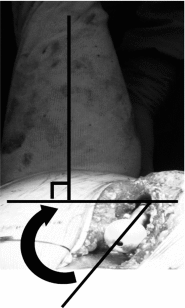Combined anteversion technique reduced the dislocation in cementless total hip arthroplasty
- PMID: 24026219
- PMCID: PMC3890140
- DOI: 10.1007/s00264-013-2091-2
Combined anteversion technique reduced the dislocation in cementless total hip arthroplasty
Abstract
Purpose: The combined anteversion (CA) technique is a method in which the cup is placed according to the stem anteversion in total hip arthroplasty (THA). We examined whether the CA technique reduced the dislocation rate, and the distribution of CA with the manual placement of the cup.
Methods: We retrospectively reviewed 634 hips in 579 patients with primary cementless THA. In 230 hips using the CA technique [CA(+)], a CA of 50 ± 10° was the aim. In the remaining 404 hips [CA(-)], the cup was first placed targeting 20° of anteversion. The post-operative CA was measured using the computed tomography (CT) images in 111 hips.
Results: One hip (0.4%) had a dislocation in the CA(+) group, whereas ten hips (2.5%) had a dislocation in the CA(-) group. A multivariate analysis showed that primary diagnosis, head size and CA technique significantly influenced the dislocation rate. Patients in the CA(-) group were 5.8 times more likely to have a dislocation compared to the CA(+) group. In the 111 hips with CT images, 81 hips (73.0%) achieved the intended CA.
Conclusions: Although the manual placement of the cup resulted in 27% of outliers from the intended CA, the CA technique significantly reduced the dislocation after primary THA.
Figures


References
-
- Philippot R, Camilleri JP, Boyer B, Adam P, Farizon F. The use of a dual-articulation acetabular cup system to prevent dislocation after primary total hip arthroplasty: analysis of 384 cases at a mean follow-up of 15 years. Int Orthop. 2009;33(4):927–932. doi: 10.1007/s00264-008-0589-9. - DOI - PMC - PubMed
Publication types
MeSH terms
LinkOut - more resources
Full Text Sources
Other Literature Sources
Medical

